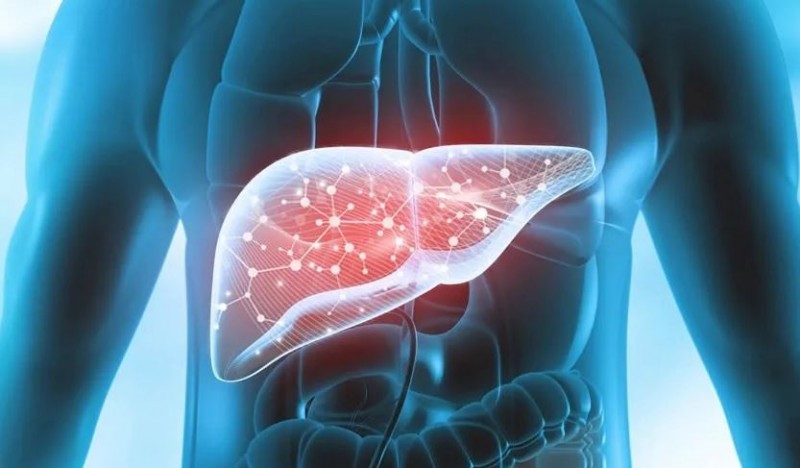
Fatty liver disease is becoming increasingly common and is a condition that occurs when excess fat accumulates in the liver. The liver is one of the most vital organs in our body, playing a crucial role in digesting food and detoxifying our system. Any issues with the liver can have a significant impact on overall health, potentially leading to conditions such as cardiovascular disease, cancer, and type 2 diabetes. Fatty liver disease generally falls into two categories: alcoholic fatty liver disease and non-alcoholic fatty liver disease (NAFLD). While alcoholic fatty liver disease is primarily caused by excessive alcohol consumption, NAFLD is often associated with obesity, high blood sugar levels, and elevated levels of fat in the blood. This condition is typically a result of an unhealthy lifestyle.
Why Recognizing the Symptoms is Important:
Liver-related diseases may not manifest noticeable symptoms in the early stages. Symptoms become apparent when the liver's ability to function properly is compromised. Recognizing these symptoms is crucial to addressing liver issues in a timely manner and preventing the progression of the disease.
Facial Symptoms:
Interestingly, some symptoms of fatty liver disease can also manifest on the face. These facial symptoms include:
Yellowing of the Skin and Eyes (Jaundice): When the liver is impaired, it may fail to process bilirubin effectively, leading to a buildup of this yellow-pigmented substance. This can result in a yellowish discoloration of the skin and the whites of the eyes, a condition known as jaundice.
Skin Redness: Individuals with liver issues may experience redness or flushing of the skin on the face.
Presence of Small Red Spider-Like Veins (Spider Angiomas): Spider angiomas are small, dilated blood vessels that can appear on the skin's surface. They are a common sign of liver dysfunction.
Rosacea: Rosacea is a skin condition characterized by facial redness, often accompanied by visible blood vessels and small, pus-filled bumps. Liver problems can exacerbate or trigger rosacea.
Why Do These Symptoms Appear on the Face?
According to health experts, these facial symptoms become evident when the liver is not functioning optimally, and the body struggles to eliminate various waste products effectively. When the liver's function is compromised, bilirubin, a yellow pigment produced during the breakdown of red blood cells, may not be processed and excreted as efficiently as it should be. This can lead to the yellowing of the skin and eyes seen in jaundice.
Moreover, the presence of redness, spider angiomas, and rosacea on the face can be attributed to the liver's role in filtering and detoxifying the blood. Liver dysfunction can result in an accumulation of toxins in the bloodstream, which can manifest as these skin conditions.
When to Consult a Doctor:
If you notice any of these facial symptoms or suspect liver-related issues, it is essential to seek immediate medical attention. Health experts emphasize that these symptoms typically become noticeable only when liver problems have advanced significantly. Therefore, early detection and intervention are critical to managing liver conditions effectively.
Maintaining a Healthy Liver:
To keep your liver healthy, it's essential to adopt a healthy lifestyle and make the right choices for your overall well-being. Here are some key steps to maintain a healthy liver:
Diet: A well-balanced and nutritious diet is essential for liver health. Avoid excessive consumption of fatty and sugary foods, and focus on a diet rich in fruits, vegetables, whole grains, lean proteins, and healthy fats. Limit or eliminate alcohol consumption, especially if you have a history of liver-related issues.
Exercise: Regular physical activity is vital for maintaining a healthy weight and overall well-being. Engage in regular exercise to help prevent obesity, a significant risk factor for non-alcoholic fatty liver disease (NAFLD).
Hydration: Staying well-hydrated supports liver function. Aim to drink an adequate amount of water daily to help your body flush out toxins.
Moderate Medication Use: Be cautious with over-the-counter medications, supplements, and prescription drugs, as excessive use can strain the liver. Always follow your healthcare provider's recommendations regarding medication.
Manage Chronic Conditions: If you have underlying health conditions such as diabetes or high blood pressure, work closely with your healthcare provider to manage them effectively. These conditions can contribute to liver problems if left uncontrolled.
Regular Check-ups: Periodic check-ups with your healthcare provider can help monitor your liver health and detect any issues at an early stage.
Fatty liver disease is a prevalent condition with potentially severe consequences if left unaddressed. Recognizing its symptoms, even those that manifest on the face, is essential for timely intervention and prevention of further liver damage. By adopting a healthy lifestyle, including a balanced diet, regular exercise, and moderation in alcohol consumption, you can significantly reduce the risk of fatty liver disease and maintain overall liver health. Remember that your liver plays a vital role in your overall well-being, and taking care of it should be a top priority.
How to Navigate Menopause: Tips for Managing Symptoms and Maintaining Health
How to Naturally Balance Hormones: Diet, Lifestyle Tips for Hormonal Health